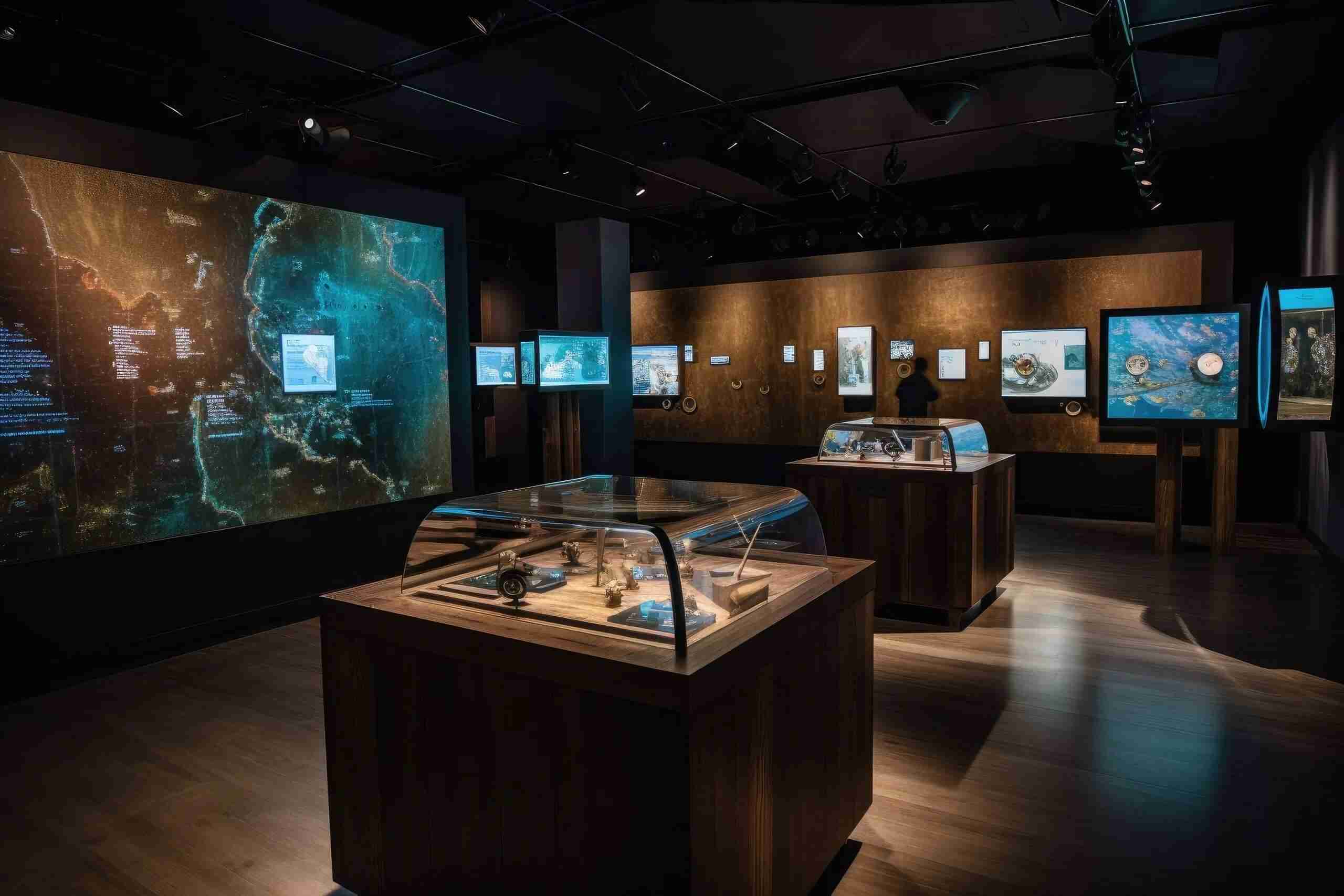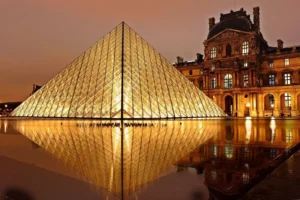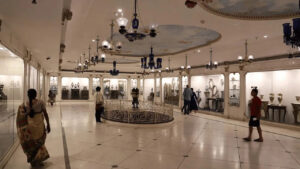
Blogs
The Future of Museum Design: Merging Technology, Art, and Visitor Engagement
Museums are undergoing a significant transformation, shifting from static displays to immersive, interactive spaces that captivate visitors. As technology, design, and storytelling converge, modern museums must adapt to the digital age while preserving their cultural and historical integrity. This blog explores the latest trends in museum design, focusing on how technology and innovative design strategies can enhance visitor engagement, improve foot traffic, and future-proof museum complexes.
Innovative Approaches in Museum Design
Modern museums need to cater to diverse audiences while respecting cultural authenticity. Here are some cutting-edge approaches that are shaping the future of museum design:
- Tech-Experiential Elements
- Interactive Installations: From LED walls to holographic displays, interactive exhibits are becoming essential in creating immersive environments where visitors can actively engage with content.
- AI-Powered Exhibits: Artificial intelligence is being integrated into exhibits to personalize the visitor experience. For example, AI face projection or virtual guides can enhance engagement.
- AR and VR Experiences: Augmented reality (AR) and virtual reality (VR) create deeply immersive experiences, allowing visitors to explore past events or alternate realities, effectively making complex content more accessible.
- Spatial Experiences and Master Planning
- Wayfinding and Visitor Flow: Effective spatial planning ensures a seamless experience, helping visitors navigate the space intuitively and reducing congestion.
- Contemporary Spaces: Minimalist interiors, combined with thematic galleries, create an aesthetically pleasing and engaging environment that facilitates a deeper understanding of exhibits.
- Museum Layout Design: Strategically designed zones ensure that different thematic exhibitions, interactive kiosks, and visitor facilities flow smoothly, offering a functional yet dynamic experience.
- Collaborative Design Solutions
- Cross-disciplinary Teams: Successful Museum designs involve collaboration among architects, exhibit designers, engineers, and content curators, ensuring that the final space is cohesive, innovative, and engaging.
- Content Curation and Production: Narrative-driven exhibits with compelling audiovisual content and clear infographics ensure that visitors are not only entertained but also informed.
- Creative Installations: Sensory-rich installations such as animatronic models or interactive dioramas engage visitors in memorable and educational experiences.

Trends Shaping the Future of Museum Design
Several emerging trends are revolutionizing how museums engage with visitors:
- Digital Experience Centers
- Holobox Displays: These innovative holographic projections allow visitors to interact with exhibits in new and dynamic ways, bringing history and science to life in ways traditional displays cannot.
- Interactive VR Games: Gamified learning experiences appeal to younger audiences and make complex ideas fun and accessible.
- Electronic Displays: Dynamic, digital content can continuously refresh to offer visitors a deeper connection with the exhibit material.
- Sustainability and Green Design
- Energy-Efficient Lighting: Implementing energy-saving lighting not only reduces operational costs but also enhances the visibility of exhibits.
- Sustainable Materials: Eco-friendly materials used in the architecture and interior design of museums reflect a commitment to sustainability and environmental stewardship.
- Landscape Design: Green spaces integrated into museum complexes offer visitors a place to relax while connecting with nature.
- Enhanced Visitor Engagement
- Multi-Media Exhibitions: Combining video, sound, and interactive displays ensures a more immersive and engaging experience for visitors.
- Museum Apps: Apps offering personal guides, AR experiences, and interactive games allow visitors to interact with exhibits in innovative ways.
- Signage and Wayfinding: Clear and aesthetically designed signage improves navigation and enhances the overall visitor experience.

Key Considerations for Museum Designers
Designing a museum requires careful planning and consideration. Below are some key aspects that must be kept in mind during the design process:
- Visitor-Centric Design
- Accessibility: Museums should cater to visitors of all ages and abilities by incorporating ramps, elevators, and tactile exhibits to ensure inclusivity.
- Interactive Zones: Providing spaces where visitors can engage with exhibits hands-on fosters curiosity, particularly for younger audiences.
- Museum Shops: Thoughtfully designed retail spaces can enhance the visitor experience and contribute to the museum’s revenue.
- Storytelling Through Design
- Captivating Narratives: Curating exhibits that tell compelling, immersive stories ensures that visitors connect emotionally with the content.
- Heritage Preservation: Museums must balance innovation with the need to preserve the authenticity of historical and cultural artifacts.
- Thematic Galleries: Dividing the museum into distinct zones with unique themes creates a more structured yet engaging experience.
- Technological Integration
- Automation and Robotics: Incorporating automation, such as robotic guides and ticketing, improves the overall visitor experience and streamlines museum operations.
- Sensory Elements: Multi-sensory exhibits, including sound, touch, and even scent, offer a richer, more engaging experience for visitors.
- AI-Driven Insights: Using data analytics, museums can better understand visitor behavior and tailor experiences to meet the needs of diverse audiences.

Peach Prime Consultancy: Your Partner in Museum Design
At Peach Prime Consultancy, we specialize in designing world-class museums that blend technology, art, and storytelling. Our team offers end-to-end solutions, from conceptualization to exhibit curation and execution, creating innovative, visitor-centric spaces that make learning immersive and enjoyable.Our services include comprehensive budget planning and cost estimation to ensure your project aligns with financial expectations, with a detailed breakdown of the total project cost. Whether you’re in Beijing, Shanghai, Guangzhou, Shenzhen, Chengdu, Tokyo, Yokohama, Osaka, Nagoya, Sapporo, Ulaanbaatar, Erdenet, Darkhan, Choibalsan, Mörön, Pyongyang, Chongjin, Hamhung, Sinuiju, Kaesong, Seoul, Busan, Incheon, Daegu, Daejeon, Taipei, Kaohsiung, Taichung, Tainan, Hsinchu, Bandar Seri Begawan, Kuala Belait, Tutong, Seria, Muara, Phnom Penh, Siem Reap, Battambang, Sihanoukville, Kampong Cham, Jakarta, Surabaya, Bandung, Medan, Yogyakarta, Vientiane, Luang Prabang, or Pakse, we provide innovative museum design, AV content development, custom solutions, and a collaborative approach with architects and engineers to deliver cohesive, impactful designs.










